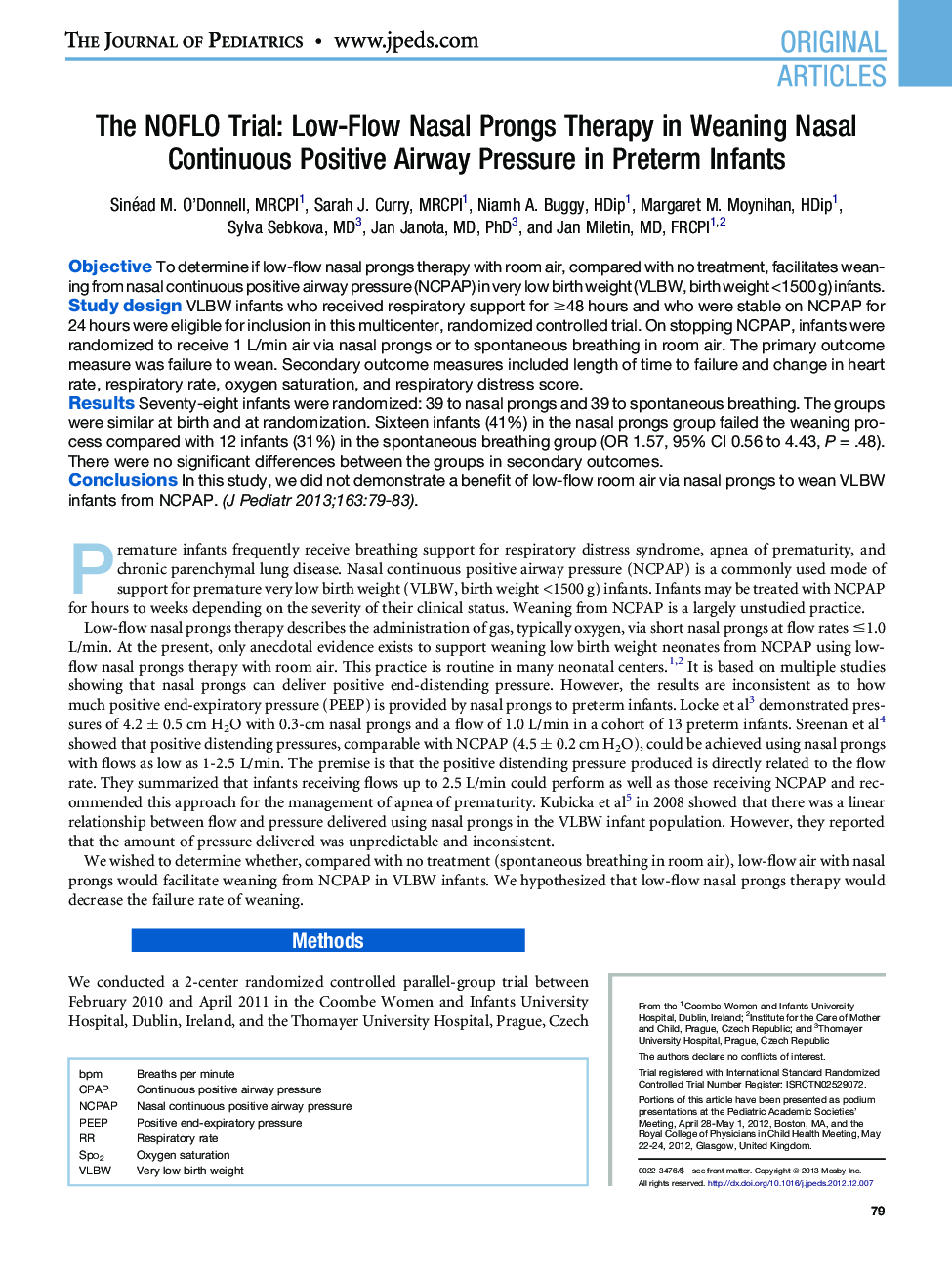| Article ID | Journal | Published Year | Pages | File Type |
|---|---|---|---|---|
| 4165297 | The Journal of Pediatrics | 2013 | 5 Pages |
ObjectiveTo determine if low-flow nasal prongs therapy with room air, compared with no treatment, facilitates weaning from nasal continuous positive airway pressure (NCPAP) in very low birth weight (VLBW, birth weight <1500 g) infants.Study designVLBW infants who received respiratory support for ≥48 hours and who were stable on NCPAP for 24 hours were eligible for inclusion in this multicenter, randomized controlled trial. On stopping NCPAP, infants were randomized to receive 1 L/min air via nasal prongs or to spontaneous breathing in room air. The primary outcome measure was failure to wean. Secondary outcome measures included length of time to failure and change in heart rate, respiratory rate, oxygen saturation, and respiratory distress score.ResultsSeventy-eight infants were randomized: 39 to nasal prongs and 39 to spontaneous breathing. The groups were similar at birth and at randomization. Sixteen infants (41%) in the nasal prongs group failed the weaning process compared with 12 infants (31%) in the spontaneous breathing group (OR 1.57, 95% CI 0.56 to 4.43, P = .48). There were no significant differences between the groups in secondary outcomes.ConclusionsIn this study, we did not demonstrate a benefit of low-flow room air via nasal prongs to wean VLBW infants from NCPAP.
